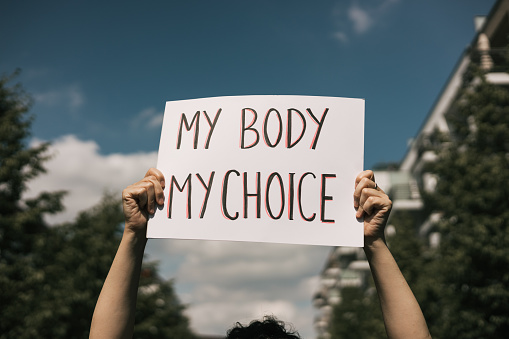

Selena Careri
Social Media Manager and News Editor
Roe v. Wade passed a law in 1973 making abortion legal for everyone in the US.
Almost 50 years later, the government is trying to overturn this case and unfortunately many citizens are agreeing with their decision.
“The ruling from the United States Supreme Court overturning Roe v. Wade strips millions of people of the right to control their bodies and to make the decisions that shape their lives, families and futures,” (Four Reasons Safe Abortion is Critical Health Care, 2022).
Everyone has bodily autonomy which gives them control over their own bodies. By overturning the Roe v. Wade case, the government is stripping people of their human rights.
“Governments that prosecute and punish women who have had abortions penalize women for exercising their basic right,” (Safe and Legal Abortion is a Woman’s Human Right, 2004).
Denying people safe abortion care in situations of rape and sexual violence is another violation of their human rights.
“Evidence shows that restricting access to abortion does not reduce the number abortions,” (Four Reasons Safe Abortion is Critical Health Care, 2022). “What it does do is increase the likelihood of an unsafe procedure.”
Taking away access to a safe and simple procedure does not magically stop the amount of people who are in need of it. Instead, it will lead them to find unsafe ways they can perform on their own.
“When abortion is banned or restricted, people who are pregnant seek unsafe means of terminating their pregnancies including: self-inflicted injury to their bodies, self-medication with drugs or chemicals, seeking treatment from an unqualified abortion provider,” (The Importance of Access to Abortion, 2022).
Some people feel they have no choice but to exercise these unsafe practices and risk harming themselves due to restrictions on safe procedures.
“Abortion restrictions inflict the most harm on low-income and already disadvantaged communities,” (Four Reasons Safe Abortion is Critical Health Care, 2022).
People with high-incomes are more likely able to pay for access to safe abortions in states where the procedure is still legal while people with low-incomes do not have the privilege to do so.
“When undertaken by a trained health-care provider in sanitary conditions, abortions are one of the safest medical procedures available, safer even than child birth,” (Key Facts on Abortion, n.d.).
When people don’t have access to that safe care, it can lead to fatal consequences.
“Where death does not result from unsafe abortion, women may experience long-term disabilities, such as uterine perforation, chronic pelvis pain or pelvic inflammatory disease,” (Safe and Legal Abortion is a Woman’s Human Right, 2004).
People who carry out unsafe practices may feel like they can’t reach out to their doctors for post-abortion care in fear of the law.
People who are against abortions need to ask themselves if they really care about human life if they are okay with putting developed human beings at risk when they seek unsafe abortions.
The stigma around abortion stops people from thinking about all the cases where it is unsafe or inhumane to force someone to carry to term.
“When a pregnancy is unwanted, its continuation can take a heavy toll on a woman’s physical and emotional well-being,” (Safe and Legal Abortion is a Woman’s Human Right, 2004). “Only a pregnant woman knows whether she is ready to have a child, and governments should play no role in making that decision for her.”
There are many cases where a person is not in a place financially where they can even afford to take care of a baby.
There are even some cases where their body cannot physically handle going through the birthing process such as a young 12-year-old girl.
“Access to a wanted abortion is a critical component of sexual and reproductive health for youth who are able to become pregnant,” (The Importance of Access to Abortion, 2022).
No matter the reason, people should have access to abortions.
“I was in an abusive relationship, severely depressed, and in my first semester of law school. My abortion saved my life. -Anonymous,” (Your Abortions. Your Voices. Your Stories, 2022).
Not everyone is in the position to be able to have a baby and provide them with a safe and happy life. They should not be forced to carry to term when they are aware of these struggles.
“Why? Because I didn’t want to be pregnant. That’s a good enough reason. -Anonymous,” (Your Abortions. Your Voices. Your Stories, 2022).
Sometimes, there doesn’t even have to be a reason. A person should simply not be forced by anyone else to do something with their body that they do not want to do.
Abortion is healthcare and anyone who is able to get pregnant is affected when you restrict their access to safe abortion.
When you take away people’s rights to control their own body, you lead them to seek unsafe procedures.
Email Selena at scareri@live.esu.edu
